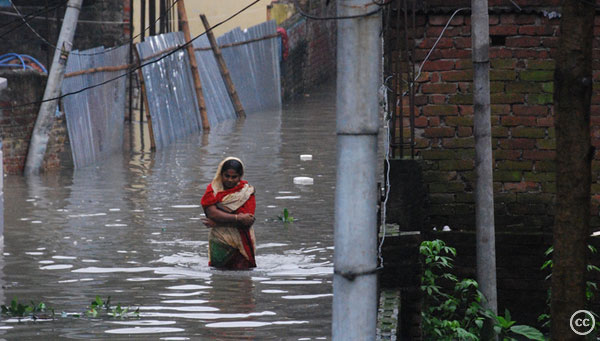Europe’s carbon price crash and future carbon markets
Dario Kenner, 3 May 2013
Summary: Prices in Europe’s flagship carbon market have crashed and are not going to recover anytime soon. As global greenhouse gas emissions continue to rise, new carbon markets are being developed in major polluting countries like China and the United States.
 The Emissions Trading Scheme (ETS) covers around half of the European Union’s total carbon emissions. It was set up in 2005 to encourage companies to shift to renewable energies by making it more expensive to pollute. For the scheme to be effective carbon prices would have to be near 30 euros but they are currently around 3 euros.
The Emissions Trading Scheme (ETS) covers around half of the European Union’s total carbon emissions. It was set up in 2005 to encourage companies to shift to renewable energies by making it more expensive to pollute. For the scheme to be effective carbon prices would have to be near 30 euros but they are currently around 3 euros.
Prices are not going to go up in the short term because there is massive over-supply due to: the continuing economic crisis; too many pollution permits being given out when the ETS began; and most recently the European Parliament’s vote against a plan that might have increased carbon prices by withholding 900 million tonnes worth of carbon permits for several years.
Despite the problems in the ETS emissions have fallen around 18% since 1990. But these figures hide the fact that Europe has gradually been outsourcing its emissions to countries like China. The United Kingdom provides a striking example of outsourcing: a recent report by the UK Committee on Climate Change shows that it is “now one of the world’s largest net importers of emissions, with a carbon footprint that is around 80% larger than its production emissions”.
This is why some civil society groups argue that the ETS has not reduced emissions and has instead allowed businesses to make huge profits by passing costs onto consumers from the generous permits they received for free. They advocate policies to reduce emissions at source instead of relying on market-based schemes.
Whatever your viewpoint, more carbon markets are on their way. Some commentators say California and Australia are learning from the ETS’s mistakes and plan to prevent over-supply by getting companies to reveal their emissions before auctioning permits, and setting a high carbon price from the start. The World Bank is also working to facilitate the link-up of carbon markets in emerging economies.
 Now China, the world’s biggest emitter of greenhouse gases, is developing its own carbon markets: the Shenzhen special economic zone is due to start an emissions trading scheme this June, followed by the Hubei province in July. Beijing and Shanghai might be next.
Now China, the world’s biggest emitter of greenhouse gases, is developing its own carbon markets: the Shenzhen special economic zone is due to start an emissions trading scheme this June, followed by the Hubei province in July. Beijing and Shanghai might be next.
Global efforts to tackle climate change could hinge on how Chinese carbon markets are structured and whether they are more effective than the ETS which only covers around 11% of global greenhouse gas emissions.
The current ETS crisis has left a big question mark over carbon markets’ ability to effectively reduce greenhouse gas emissions at the urgent speed that’s needed. Despite the shifting location of emissions studies show overall global emissions are still rising fast and we will soon go past the milestone of 400 parts per million – scientists warn that when the concentration of carbon dioxide in the atmosphere goes past 450ppm we could cross crucial climate tipping points.
It remains to be seen how the ETS crisis affects Europe’s climate policies and other carbon markets but with climate change already costing the global economy $1.2 trillion a year and impacting on the lives of millions of people effective policies are needed fast.
—————————-
See also: Interactive global carbon map with details on distribution of population, wealth, extraction, emissions, consumption and areas at risk of climate change.

Nice article, I have a couple of questions. Considering the information put forward, are there any practical approaches that could encourage an increase in the price of carbon on these European carbon markets? Or would that not solve the problem? If say they put in a government enforced bottom end cap at say 15 euros (obviously below what you mentioned is needed) what actually changes would be seen? companies loosing money / jobs outsourcing to less climate conscious economies?